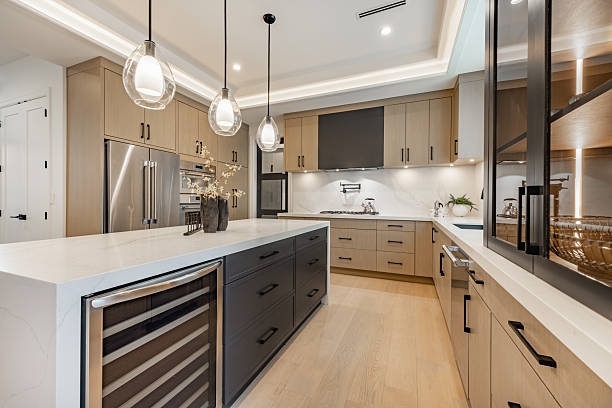A whole house renovation can be exhaustive and demands a serious undertaking. To begin an extensive house remodel, start with thorough planning, including defining your goals, establishing your budget, and creating a detailed plan with the help of a contractor or designer. Remodeling allows homeowners to customize their space to better suit their needs and improve overall comfort. Whether it’s updating a home or a full house transformation, Nostrand Home Improvements delivers high-quality craftsmanship and personalized service in every project.
Planning a Whole-House Remodel-Everything You Need to Know
A full house remodeling project can be more cost-effective than piecemeal renovations in the long run. It can be hard for homeowners to figure out where to begin and requires dedication, time, and planning. Whole house renovation involves significant changes to the floor plan, adding rooms, upgrading bathrooms, reworking plumbing and electrical wiring, and HVAC infrastructure. Following the general order of a whole house remodel ensures a well-executed project, creating a unified and harmonious look.

| Interesting factSmall renovations may end up costing more, so more people are considering larger renovations. |
Here is your step-by-step guide about a whole-house remodel and where to start.
- Planning and designing
Identify the specific changes you would want to make and establish a clear goal for your remodel. Seek the opinion of designers, contractors, and architects. Set a realistic budget and don’t forget to set aside a contingency fund for unexpected costs. Hire a reputable designer or contractor to help with the design, planning, and execution of the project.
- Obtaining permits
Ensure you obtain all the permits before starting any work. Discuss and develop a comprehensive timeline and plan that outlines all the phases of the remodel. Adherence to building codes and regulations is essential for rebuilding and reframing.
- Demolition
It involves removing all the existing structures, materials, and features to prepare the space for new construction and design. Whether partial, selective, or gut demolition, it’s a crucial step in full-scale remodeling.
- Rebuilding and reframing
Whether restructuring from the ground up or modifying walls, floors, or roofs, both steps are necessary and require a comprehensive plan to determine the extent of work required. It should also consider the impact of those changes on the overall structural integrity of your home.
- Essential upgrades
A whole-house remodel involves numerous essential upgrades like structural changes in walls, windows, and doors, system upgrades in electrical, plumbing, and HVAC, and interior improvements in flooring, painting, and insulation. Prioritizing these upgrades ensures a solid foundation for a home remodel, resulting in a safe and functional living space.
| Fast factIf the rebuild value increases, your insurance premiums may also increase. |
- Interior transformation
This stage involves interior improvements like replacing old or damaged flooring with a new one. A fresh coat of paint on the walls can revitalize your whole space, while upgrading lighting fixtures can improve the overall ambience of the indoors. Proper insulation is essential in a full-scale remodel to improve the energy efficiency of your home. Kitchen and bathroom remodels are considered high-impact remodels that can significantly increase the home’s value.
- Adding decorative touches
It revolves around complete cosmetic details ensuring everything is in place before the project is considered complete. This includes adding decorative elements like installing curtains and blinds and hanging artwork and decor like mirrors to personalize the space. Arranging furniture to optimize the flow and adding decorative accessories like rugs, throws and plants complete the look.
- Final inspection and cleaning
This stage involves ensuring all work is completed to code and meets your expectations. Conducting a thorough inspection is essential to identify any remaining issues or areas that need attention. Deep cleaning is done to remove the construction dust, debris and residue. Professional contractors make any necessary adjustments or touch ups to ensure the space is perfect.
| Did you know?More than 30% of young people prefer to make DIY home projects compared to the higher-income households of the older population, who favor professional contractors. |
Conclusion
A whole-house remodel is an extensive task that requires careful planning with the help of a contractor or designer to transform your entire structure. Essential structural changes and system upgrades are tackled during the process before focusing on cosmetic changes. It’s akin to a new construction. A full remodel can help create a space that truly feels like your own by personalizing your home to reflect your style and preferences.
FAQs
Which is the best place to start when renovating a house?
Experts recommend beginning with the room you spend your most time in, like the living room.
What adds the most value when remodeling a home?
A bathroom and kitchen remodel can improve your ROI by more than 70 %.
What is the most expensive part of home remodeling?
Kitchen remodeling is considered the most expensive part of home remodeling.

